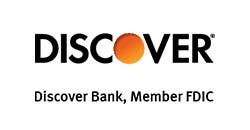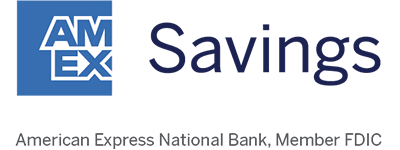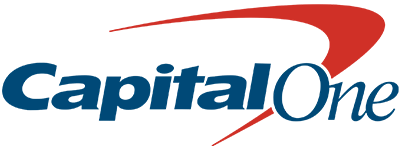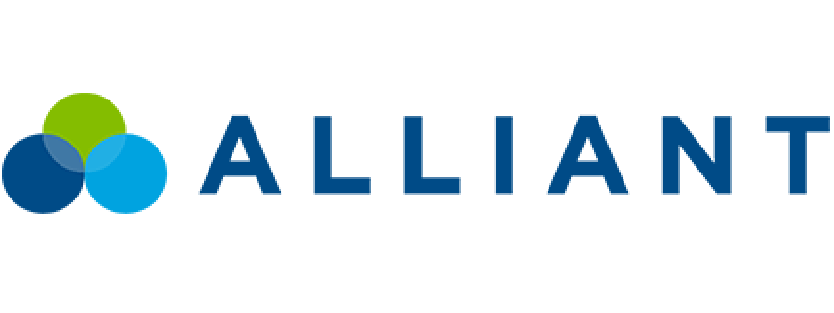Chase Bank Review 2024
The Bankrate promise
At Bankrate we strive to help you make smarter financial decisions. While we adhere to strict , this post may contain references to products from our partners. Here's an explanation for .
At a glance
 Best bank for sign-up bonuses
Best bank for sign-up bonuses

CDs
Checking
Savings
About Bankrate Score
Overview
Chase is a great option if you like having quick access to branches and ATMs — there’s a banking presence in nearly every state. Chase’s app and website can help you easily send money to anyone, pay your bills, create a budget and more. But if you’re looking for a bank with the highest savings rates, there are better options available.
Highlights
- 24/7 Customer Service
- Digital Leader
- Large Branch Network
Offers featured here have been sponsored which impacts how, where, and in what order the products appear. Not all offers are displayed on this page.
These are sponsored offers rated highly by us for competitive rates, fees, and minimums.

APY, or annual percentage yield, is the yearly return on a bank or investment account.
APY, or annual percentage yield, is the yearly return on a bank or investment account.
Bankrate Savings rating = 4.7/5
Bankrate scores are objectively determined by our editorial team. Our scoring formula weighs several factors consumers should consider when choosing financial products and services.

APY, or annual percentage yield, is the yearly return on a bank or investment account.
APY, or annual percentage yield, is the yearly return on a bank or investment account.
Bankrate Savings rating = 4.7/5
Bankrate scores are objectively determined by our editorial team. Our scoring formula weighs several factors consumers should consider when choosing financial products and services.

APY, or annual percentage yield, is the yearly return on a bank or investment account.
APY, or annual percentage yield, is the yearly return on a bank or investment account.
Bankrate Savings rating = 5/5
Bankrate scores are objectively determined by our editorial team. Our scoring formula weighs several factors consumers should consider when choosing financial products and services.
Offers featured here have been sponsored which impacts how, where, and in what order the products appear. Not all offers are displayed on this page.
Overall
With a massive branch network and breadth of product offerings, Chase is often viewed as the country's signature banking institution. Customers can choose from a full range of banking services, including checking and savings accounts as well as certificate of deposit (CD) accounts. But if you’re looking for a bank that pays competitive rates, you’ll want to look elsewhere.
Pros
-
Chase has more than 4,900 branches and more than 15,000 ATMs.
-
The bank’s mobile app is consistently high-rated.
-
Chase often rewards new customers with bonuses for opening an account.
Cons
-
Rates on Chase’s savings accounts and standard CDs are very low.
-
The bank charges a $3 fee at out-of-network ATMs in the U.S.
-
Chase’s basic accounts don’t reimburse out-of-network ATM fees.
Chase Bank banking products
APY last updated between 7/19 and 7/25.
Chase Bank savings overview
This account doesn’t have a minimum balance requirement. It charges a $5 monthly service fee, but customers can take some manageable steps to waive the fee, such as maintaining a $300 daily balance. A recurring $25 transfer from your Chase Checking account to your Chase Savings account can also waive that monthly fee.
For customers who have a “premier plus” relationship with the bank, the Chase Premier Savings account pays a slightly higher yield, but it’s also well below the national average. To earn the premier rates, customers must link their accounts to a Chase Premier Plus Checking or Sapphire Checking account and make at least five transactions in a monthly statement period using the linked checking account.
Pros
-
The monthly fee is waived when customers meet one of a few manageable requirements.
-
Chase’s autosave feature can help you create goals and save for them.
-
You can make as many withdrawals as you want without running into a fee (although there may be a daily limit depending on the account).
Cons
-
The yields on both savings accounts are very low.
-
Customers must take monthly steps to earn the (still low) premier relationship APY.
-
The Chase Premier Savings account has a $25 monthly maintenance fee if you don’t qualify to have it waived.
-
See how rates for this account have changed over time. Interact with the trend lines to view APY by date.
Chase BankAPYAPY last updated between 7/19 and 7/25.APYAPY last updated between 7/19 and 7/25.National average APYHow do we get this data?Bankrate independently tracks hundreds of APYs and product details for banking institutions nationwide. We retain the historical data of every rate we track in our database. If there are any gaps where we weren’t actively tracking a rate at the time, the graph will reflect the missing data.
Offers featured here have been sponsored which impacts how, where, and in what order the products appear. Not all offers are displayed on this page.
This is a sponsored offer rated 4 stars or higher for competitive rate, fees, and minimums.

APY, or annual percentage yield, is the yearly return on a bank or investment account.
APY, or annual percentage yield, is the yearly return on a bank or investment account.
Bankrate Savings rating = 4.7/5
Bankrate scores are objectively determined by our editorial team. Our scoring formula weighs several factors consumers should consider when choosing financial products and services.
Bank fees
| Fee | Charged? |
|---|---|
| Overdraft fee | $34, with a maximum of three fees per day; no fee for overdrafts totaling $5 or less; no fee for customers with Chase Overdraft Assist who are overdrawn by $50 or less at the end of the business day. |
| Non-sufficient funds fee | None |
| Monthly maintenance fee | $5 - $25; $0 if requirements are met |
| Out-of-network ATM fee | $3 for ATM use in the U.S.; $5 per withdrawal at ATMs outside the U.S. |
| Excessive transaction fee | None |
Customer experience
Customer support
Physical presence. Chase offers access to more than 4,900 branches and 15,000 Chase ATMs and has a banking presence in nearly every state.
Customer service. In addition to receiving support over the phone, Chase customers can also send a message in the Secure Message Center when logged onto the website or app. The Chase Digital Assistant, available in the app, is a bot that can answer common questions.
High customer satisfaction. Chase bank consistently received high customer satisfaction scores in JD Power’s 2024 U.S. Retail Banking Satisfaction Study. Of note, Chase received the highest satisfaction score in the South Central region of the country.
Digital experience
Highly rated mobile app. Chase’s mobile app, which has been rated by more than six million users, receives high scores on the Apple App and Google Play stores. The mobile app allows you to send money to anyone, pay your bills and create a budget. And because Chase offers credit cards, too, you’ll be able to find all of your banking products in one place through the app if you have a Chase credit card in addition to other deposit products, such as a checking or savings account.
Complaints
CFPB enforcement action. In 2017, the Consumer Financial Protection Bureau (CFPB) fined Chase Bank $4.6 million for failing to implement the legally required processes for reporting information about consumers’ checking account behavior.
SEC fine. Most recently, in June 2023, the Securities and Exchange Commision (SEC) fined JPMorgan Chase $4 million for deleting 47 million emails from employees within the banking division of the company.
Bankrate staff insights
“I'm not surprised that its app is highly rated by its users,” said a Bankrate staff member who banks at Chase personally. “I like being able to see all of my accounts in one place. Not always, but most of the time wherever I've moved there has been a Chase nearby. That's nice not having to switch banks just because I moved. The mobile deposit and Zelle in the app are easy to use.”
About Chase Bank
Chase Bank is the consumer banking arm of JPMorgan Chase, one of the largest banking companies in the U.S. Chase offers banking services that include checking and savings accounts, as well as CDs. The bank, which can trace its roots to 1799, has grown through several signature mergers over the years, including one with Bank One Corp. in 2004 and its 2008 acquisition of the deposits and most of the assets of the failed Washington Mutual.
Chase maintains more than 4,900 branches in 49 states. In May 2023, Chase acquired most of First Republic Bank’s operations after the beleaguered regional bank was seized by federal regulators. First Republic’s 84 branches were subsequently converted to Chase branches, with Chase later announcing plans to shutter 21 of those converted branches while overhauling others.
If you like having quick access to branches and ATMs — and you live where the bank operates — Chase is an obvious choice. If you’re hunting for high rates or want to be able to use the first ATM you see without paying a high out-of-network fee, look elsewhere.
How Chase Bank compares to other banks
Compare different account types offered by Chase Bank. Annual percentage yields (APYs) shown were updated between July 19, 2024 and July 25, 2024.
|
Selected bank
Chase Bank savings account

Bankrate score
2.9
Bankrate Savings rating = 2.9/5 Bankrate scores are objectively determined by our editorial team. Annual percentage yields (APYs), minimum opening deposit requirements and minimum balances to avoid monthly service fees are some of the things that make up Bankrate’s score. |
Most comparable
Wells Fargo savings account

Bankrate score
3.0
Bankrate Savings rating = 3.0/5 Bankrate scores are objectively determined by our editorial team. Annual percentage yields (APYs), minimum opening deposit requirements and minimum balances to avoid monthly service fees are some of the things that make up Bankrate’s score. |
Search for or select a bank:
Bankrate score
Bankrate Savings rating Bankrate scores are objectively determined by our editorial team. Annual percentage yields (APYs), minimum opening deposit requirements and minimum balances to avoid monthly service fees are some of the things that make up Bankrate’s score. |
|---|---|---|
|
APY
APY, or annual percentage yield, is the yearly return on a bank or investment account. APY includes the effects of compounding interest. APYs last updated between July 19, 2024 and July 25, 2024.
|
||
| 0.01% | 0.01% | |
|
Minimum balance for APY
|
||
| $0.00 | $25.00 | |
|
Estimated earnings
Interest earned calculation based on a $50,000 deposit amount for a period of 1 year and is rounded to the nearest dollar. Exact earnings are dependent on calendar year, balance, and compounding frequency. Minimum deposit rules may apply.
|
||
| $5 | $5 | |
| The Chase Savings account is the bank’s standard savings account. It offers a yield well below the national average for savings accounts. The Chase Savings account has a $5 monthly maintenance fee. Starting every day with at least $300 or automatically transferring at least $25 per month from your Chase checking account to this savings account are two ways to waive the fee. | The Wells Fargo Platinum Savings account has check-writing privileges. That might give you more payment flexibility than with other savings accounts. The bank doesn’t offer a debit card for this account. | |
|
|
N/A
|
|
|
N/A
|
|
APY offering:
0.01%
1/5
APY, or annual percentage yield, is the yearly return on a bank or investment account. APY includes the effects of compounding interest.
Minimum balance for APY:
$0.00
5/5
The lowest deposit amount an account must have before it can earn interest.
Monthly service fee:
$5.00
2/5
A monthly charge a financial institution deducts from an account if certain requirements are not met.
Minimum balance to avoid fee:
$300.00
4/5
The lowest balance an account must maintain in order to avoid a fee.
Access to funds:
Great
5/5
A procedure that allows an individual or organization to access and manage the funds of another account holder.
|
APY offering:
0.01%
1/5
APY, or annual percentage yield, is the yearly return on a bank or investment account. APY includes the effects of compounding interest.
Minimum balance for APY:
$0.00
5/5
The lowest deposit amount an account must have before it can earn interest.
Monthly service fee:
$5.00
2/5
A monthly charge a financial institution deducts from an account if certain requirements are not met.
Minimum balance to avoid fee:
$300.00
4/5
The lowest balance an account must maintain in order to avoid a fee.
Access to funds:
Great
5/5
A procedure that allows an individual or organization to access and manage the funds of another account holder.
|
APY, or annual percentage yield, is the yearly return on a bank or investment account. APY includes the effects of compounding interest.
The lowest deposit amount an account must have before it can earn interest.
A monthly charge a financial institution deducts from an account if certain requirements are not met.
The lowest balance an account must maintain in order to avoid a fee.
A procedure that allows an individual or organization to access and manage the funds of another account holder.
Bankrate does not currently track additional product details for this bank.
|
Chase Bank vs. Wells Fargo
As two of the largest U.S. banks, Chase and Wells Fargo are convenient options for consumers who prefer in-person banking. Both operate thousands of branches and tens of thousands of ATMs across the nation.
Both banks offer checking and savings accounts with monthly service fees that are relatively easy to waive when requirements are met. However, the interest rates offered on both of the banks’ deposit accounts are generally much lower than those that can be found at places like online banks.
When it comes to CDs, Chase offers a broader range of terms than Wells Fargo, and Chase requires a minimum deposit that’s less than half the amount required by Wells Fargo. Neither of the banks offers a personal money market account.
Chase Bank FAQs
Review methodology
We assign a score to each type of account and its features, weigh them carefully based on importance to account holders and determine an overall score. Read our full review methodology.
— Staff writer Karen Bennett contributed to an update of this story.
Thank you for sharing your experience with Bankrate





















